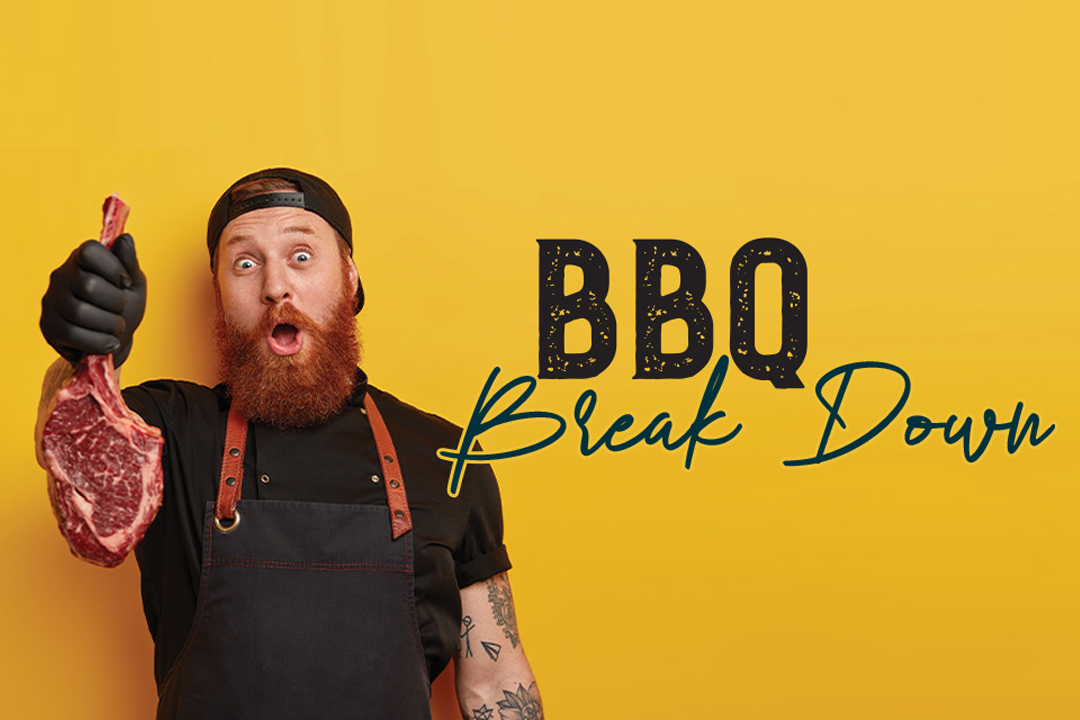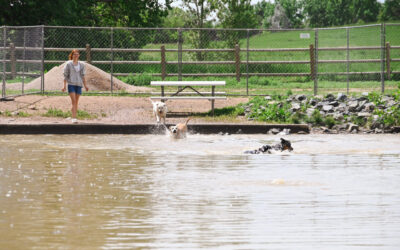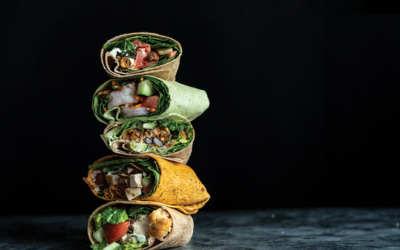If you ask North Carolina-raised Chris Robinson—he’s been cooking barbecue for 15 years at his Fort Collins restaurant, Hog Wild BBQ—the art of smoking meats centers on a sense of place and tradition.
He links barbecue to four southern regions; each claim territorial rights when it comes to methods and practices.
Calling them “the four stars”—North Carolina, Memphis, Kansas City and Texas—each has regional variations for devices to smoke the meats, the natural woods preferred for infusing meat with a smoky flavor and whether to coat the meat with a dry or wet rub before applying the heat.
Lastly—and surprisingly of least importance to the three barbecue experts NOCO Style spoke with—is the question, which sauce is best?
But when you get down to barbecue basics, regional style matters less than following best practices. Our three experts detail their best practices for you to use as an example. They all acknowledge their differences, but their fundamentals are strikingly similar. Beyond that, it’s up to you to decide what style you think tastes the best.
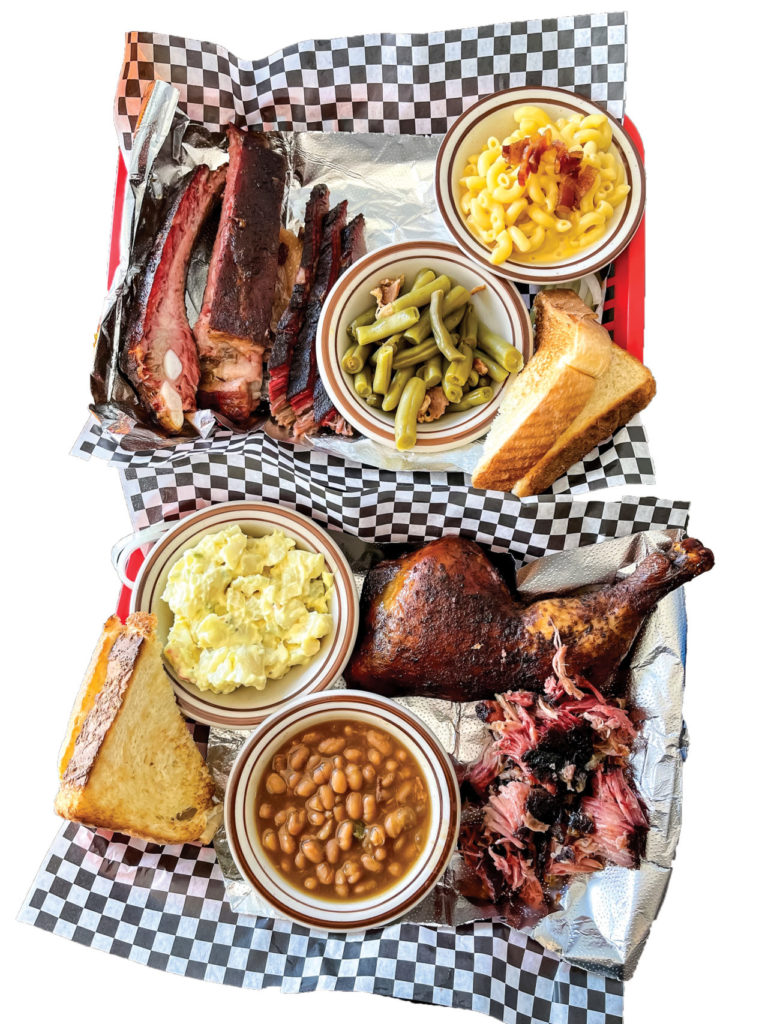
The Bearded Bear BarBQ. Photo by Emily Kemme.
Good barbecue is a test of patience
Historically, smoking leftover meats was a way to keep them from spoiling. In the American South, barbecuing wild hogs became celebratory occasions, acknowledging a group effort to capture and cook the pigs. Through the years, barbecue’s connection to celebrations was embedded into southern culture.
Cooking meats over low heat (we’re talking 250 degrees) for a long time is about the willingness to let the smoke do its work.
It’s ideal for tough cuts: extended cooking time transforms collagen—a protein in connective tissue—into gelatin, according to “The Science of Good Cooking.” Gelatin retains moisture more efficiently, allowing tight meat muscle fibers to relax and draw moisture back into it.
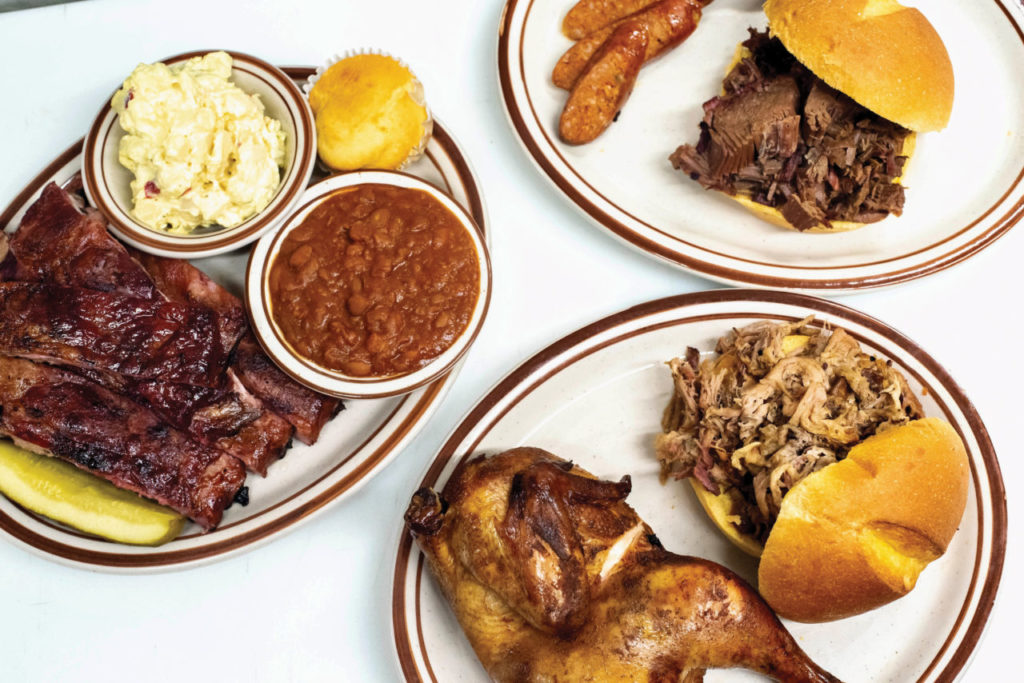
Hog Wild BBQ – Photo by Emily Kemme
Bill Espiricueta spent years working in fine dining, including a five-year stint as head chef at Nobu in Dallas, part of the global Japanese restaurant powerhouse.
When Espiricueta jumped out of the frying pan and into the fire, opening SMŌK, a counter service barbecue joint with locations in Denver and Fort Collins, he did so out of nostalgia for the Kansas City BBQ joints he frequented growing up.
Years of attention to consistency and kitchen training helped his barbecue venture take off. Patience, he says, is the most important thing he’s learned.
“It’s not about the recipes,” he says. “Barbecue is about a lot of care and a lot of time.”
The time meat spends inside a smoker varies by type and cut. Beef brisket takes longest; the length depends on the pit master.
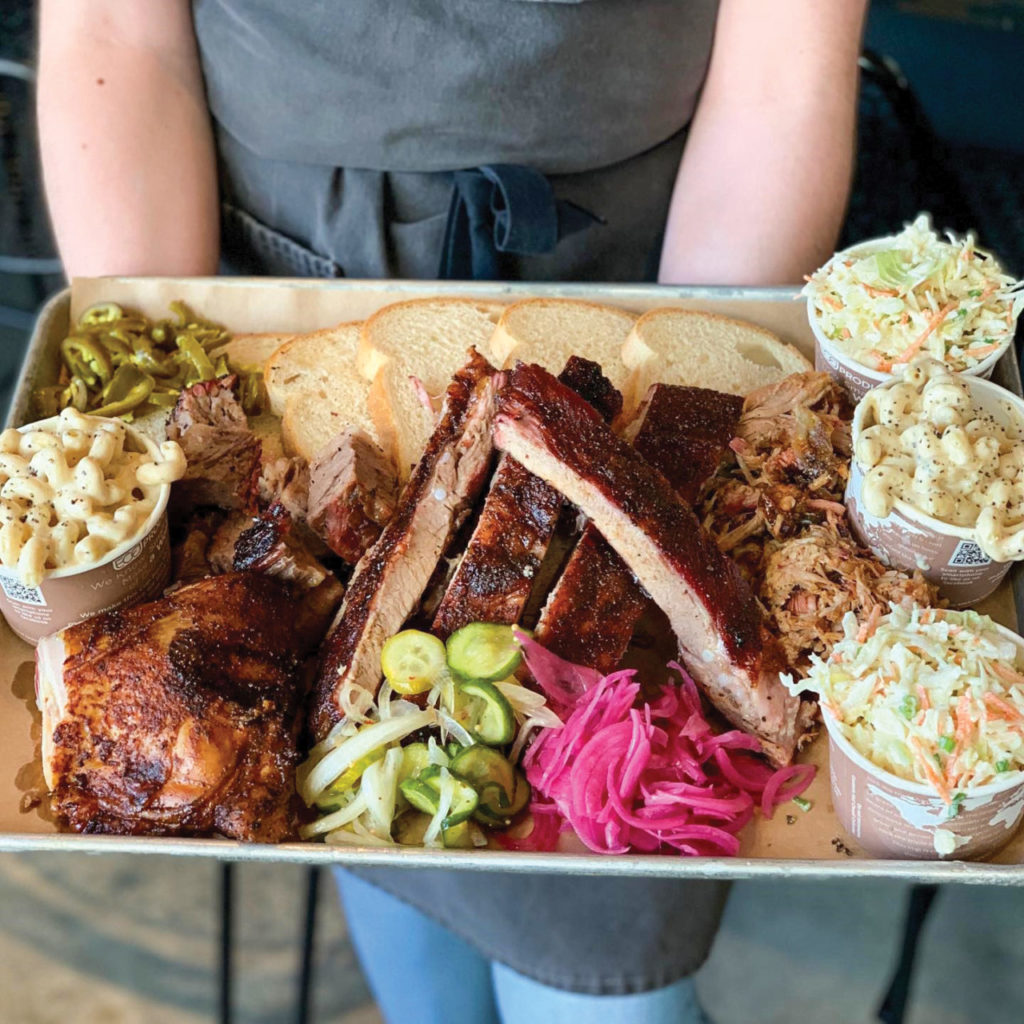
Photo courtesy of SMŌK.
Born and raised in Dallas, Tramain Davis of The Bearded Bear BarBQ in Greeley learned about cooking from his grandmother. If he wasn’t outside playing, he was in the kitchen. By age 16, he was firing up the smoker, and by 25, he got a cottage industry license to sell plates of barbecue to his neighbors.
He says prepping meat is a time consuming, essential task. He trims a lot of fat off brisket, including removing the fat kernel.
“When you cook, that fat stays hard and doesn’t melt. Removing it makes the brisket more tender and moist; the flavor can travel throughout the brisket instead of getting caught in that one crevice of a fat pocket,” Davis says.
He also pulls the thin layer of silver skin off the back of ribs, typically a two-hour process since he smokes a dozen racks at a time. The result: sigh-invoking ribs.
Davis uses an American grill with rotisserie trays that hold 700 pounds of meat. He keeps brisket in the smoker for 10-12 hours and pork shoulder in for 7-9 hours. Espiricueta believes pork needs at least 8 hours.
Resting meat is the next essential step. After wrapping it in heavy paper, Davis lets it sit for at least 2-3 hours. Espiricueta recommends more than four hours. Richardson smokes then wraps brisket and puts it in a 180- to 200-degree oven overnight. It’s a 24-hour process, which is why he says Hog Wild’s meat is fall-apart tender.
“A lot of barbecue places cook the meat overnight for shorter times. With my method, my staff and I get to go home for the night,” he says.
Getting lost in the woods
Where there’s smoke, there’s fire, but barbecue’s flavor is sourced from the wood that fuels it.
Espiricueta says the wood is up to a pit boss’ preference, but he uses red and white oak. It’s more expensive, but it’s harder, burns longer and the flavor penetrates without overpowering. He uses a gas-assisted rotisserie style smoker, so he uses less wood.
Robinson relies on hickory wood because he’s comfortable with it. While he recognizes there are other favorites—the mesquite of Texas, for instance—he thinks hickory imparts a mild, sweet flavor along with rich bacon notes.
He also prefers hickory because he grew up with it.
“In North Carolina, you walk out your front door and see a hundred hickory trees; everybody cooks with hickory down there,” he says.
Davis prefers pecan, pairing it with fruit woods like apple and pear to add flavor nuances.
Dry or wet rub
Before smoking, meat is seasoned with a “rub” in barbecue lingo. Dry rubs can be ground from scratch or bought pre-mixed. They run the gamut from salt and pepper to whatever inspires the chef.
It becomes a wet rub when a pit boss adds liquid. Choices include mustard, vinegar, alcohol or oil.
Espiricueta prefers a straight dry rub; Davis rubs in sugar, paprika, celery, garlic and a range of dried herbs, but applies a light blend of mustard and olive oil before adding dry seasoning so the dry ingredients don’t run off with the juices. Robinson uses a mixture, giving meat a dab of sauce and then he says, “Let it go.”
Getting saucy
Robinson, Espiricueta and Davis agree that sauce is a condiment driven by personal taste, not a secret to their success. In fact, a lot of Davis’ customers eat his barbecue without it.
“A lot of people think the best thing about barbecue is the sauce,” Robinson says. “I completely disagree. If the barbecue is bad, the sauce isn’t going to help it.”
Espiricueta took components from Carolina, Texas and Kansas City sauces to develop SMŌK’s signature sauce, combining tomato and rubbed spice from Texas, the brown sugar in KC, and mustard and vinegar elements representative of Carolina. He also offers patrons Carolina Gold, a sauce mirroring Carolina’s mustardy, vinegary profile with hints of hot sauce and Worcestershire for a savory, salty punch.
“If you’re going to use it, sauce has to complement the barbecue,” he says.
In fact, all three chefs offer versions of regional sauce styles.
Robinson rationalizes it like this: “Everybody has a sauce, and they can make their own damage. We just smoke the meat, so we don’t mess it up before it gets into our customer’s mouths.”
SMoK BBQ Sauce
Ingredients
2 onions
1 oz. yellow mustard
2 quarts tomatoes
2 cups ketchup
2 lbs brown sugar
1 cup apple cider vinegar
2 cups SMŌK BBQ rub
Method:
Simmer until sugar dissolves and sauce starts to thicken. Take off heat, blend well and cool.
*Makes one gallon
SMoK BBQ Rub
Ingredients:
1 1/2 Tbs. black pepper
2 Tbs. smoked paprika
1 tsp. coriander
2 tsp. fennel seed
1 tsp. cumin
1/2 Tbs. mustard seed
2 tsp. garlic powder
2 tsp. onion powder
3 Tbs. dark chili powder
1/2 Tbs. chipotle powder
1 1/2 Tbs. salt
1/2 tsp. celery seed
1 1/3 cup brown sugar
Method:
Grind spices together until powdered. Add remaining ingredients and mix well. Store in airtight container.
_________________________________
Emily Kemme is an award-winning novelist and Colorado food writer. If she’s not tapping the keyboard, you’ll find her stirring a pot, always at her two collies beck and call.


